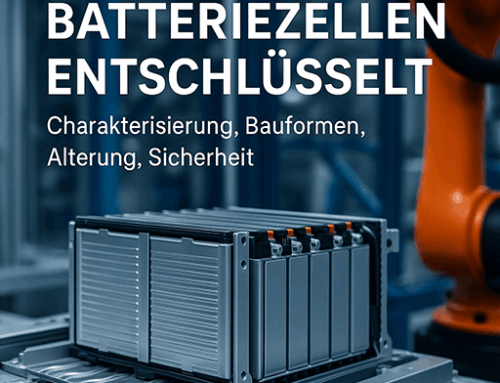The most important information on BKW from the new VDE V at a glance
- Schuko permitted: Operation via normal earthed socket outlet permitted if device + installation are suitable.
- 800 W feed-in power: Inverter may feed a maximum of 800 W / 800 VA into the domestic grid.
- 960 W module output with Schuko: PV modules together may have up to 960 Wp if a normal Schuko plug is used.
- Up to 2,000 Wp with energy plug instead of Schuko: Higher module output possible if a special energy plug is used (e.g. Wieland). ATTENTION, applies to the module power, not the inverter power!
- Integrated safety: Among other things, the standard requires disconnection on the mains side, residual current monitoring and overtemperature protection.
- No multiple sockets: connection via Schuko only to a fixed wall socket.
- Stable installation: Fasten modules securely, firmly and mechanically stable.
- Pay attention to tested devices: Give preference to devices with VDE conformity and complete documentation.
- Check briefly at regular intervals: Check the socket, plug, cable and holder visually from time to time.
A new safety standard for plug-in solar: VDE V 0126-95 is coming
Low-power plug-in solar devices – known as “balcony power plants” – are on everyone’s lips, and almost all balconies, allotment gardens and sometimes even garages. They also provide tenants and homeowners with an uncomplicated introduction to private power generation. However, as they become more widespread, the need for clear technical regulations is also increasing. This is where the new VDE V 0126-95 comes in: a preliminary standard that defines uniform safety requirements and test principles for these devices for the first time.
For citizens, this means more security and transparency. For electrical specialists, it also provides a new, important basis for work and argumentation in the field of photovoltaics, building technology and grid security. And simplicity too: thanks to the confirmed use of Schuko plugs and an increased module output of 960 watts (previously 800 watts).
What does the new pre-standard VDE V 0126-95 regulate?
The pre-standard comprehensively describes the safety features that plug-in solar devices must have before they can be used in households.
These include, among others:
- Requirements for parallel grid operation
- Protective measures against electric shock
- Specifications for thermal safety
- Test requirements for inverters and energy connectors
- Mechanical requirements, e.g. for mounting and protective housing
- Behavior in the event of mains faults and switch-off conditions
This is the first time that it has created a clear technological level to which manufacturers, installation companies and testing institutions can orient themselves.
Why is it a PRELIMINARY standard – and not a final standard?
The term “pre-standard” may understandably cause many readers to frown. Therefore, let us briefly explain:
Standard
A standard is a fully elaborated, consensus-based document that is considered the technically binding “state of the art”.
Pre-standard (VDE V)
A pre-standard is published if:
- the topic is new and dynamic,
- European requirements are still in progress,
- or existing standards cannot initially be supplemented “collision-free”.
It is relevant in practice, but not yet final. A preliminary standard is regularly reviewed and can later be developed into a fully-fledged standard.
What does this mean in practice?
A pre-standard is not “provisional in the sense of uncertain”, but represents a functional and recognized state of the art for new technologies – especially where conventional standards would require several years of development.
Significance for citizens: more security, more clarity
The pre-standard has several advantages for end users:
- Devices that comply with this standard fulfill clearly defined minimum requirements.
- Risks such as overheating, impermissible regeneration or faulty disconnection are reduced.
- The connection by an electrical specialist can be safely evaluated and documented.
In short, the operation of a balcony power plant is becoming technically more transparent – and safer.
Why does it make sense to connect higher module peak outputs if the inverter only feeds or is only allowed to feed 800 W?
At the moment when the sun shines on our solar module at the optimum angle at the optimum temperature, unshaded and cloud-free, we are actually not using the full power of our solar module, that is correct. But in the moment (i.e. all other moments) in which our solar module does not deliver its optimum output, we have the advantage because our 960 W module might just deliver 780 W, while an 800 W module would only deliver 650 W. This is not a problem for the inverter even at peak power, we simply do not use everything at these moments. The decisive factor for the inverter is the output power of 800 W AC and the permissible DC input power corresponding to the rated power of the solar module (e.g. 2000 Wp).
Importance for electrical specialists: New tasks in the PV sector
VDE V 0126-95 is an important tool for electrical specialists.
- Clear test basis
The pre-standard makes it possible to assess more clearly whether an appliance can be operated safely.
- Evaluation of the building installation
Even if plug-in solar devices are designed for the end user:
The responsibility for the permanently installed building electrics remains with the specialist.
The pre-standard does not exempt from testing:
- Cable dimensioning
- Protective organs
- Suitable sockets
- Risk assessment for older systems
- Grid compatibility and switch-off conditions
Compliance with correct shutdown times and grid protection parameters remains a central component of the specialist assessment.
- Consulting and documentation
Electrical specialists can citizens in the future:
- certified devices,
- Evaluate installation routes,
- Explain risks,
- and secure connection options.
This means that the electrical specialist remains the central point of contact for private photovoltaics.
Why the new pre-standard is a small milestone for electrical safety
VDE V 0126-95 is more than just a set of technical regulations.
It is a step towards a future in which decentralized energy generation is part of everyday life – and yet must remain secure.
It closes a previously gaping hole:
- Citizens want to generate energy easily.
- Manufacturers need a clear framework.
- Chief responsible electrical specialists need a reliable basis in order to be able to carry out their responsibilities professionally.
The new pre-standard makes it possible to define the interaction.
🎓 Conclusion:
For end users, this means more orientation and security.
For electrical specialists: a standardized basis for correctly assessing installations, minimizing risks and maintaining a professional level of electrical safety in the home.
With this pre-standard, private photovoltaics is coming of age – and the role of the electrical specialist is more important than ever.
Our
If you would like to know more about the different roles, in particular those of the EiP, ESfdt, ESfdt and especially those of the CRES and their interaction, I recommend our publications, for example the audio book “Die Verantwortliche Elektrofachkraft: CRES-Struktur und Betriebliche Elektrosicherheit für Unternehmer, Fach- und Führungskräfte”. Information and sources of supply can be found on the usual audiobook portals and on the homepage tcs-engineering.de









Leave A Comment